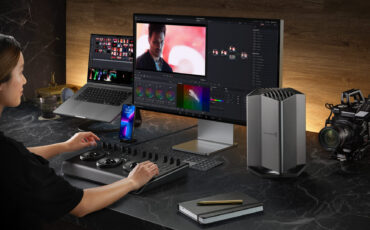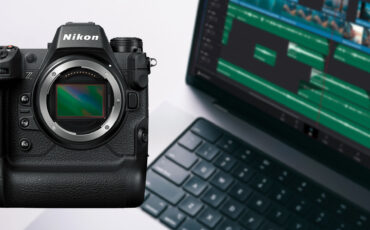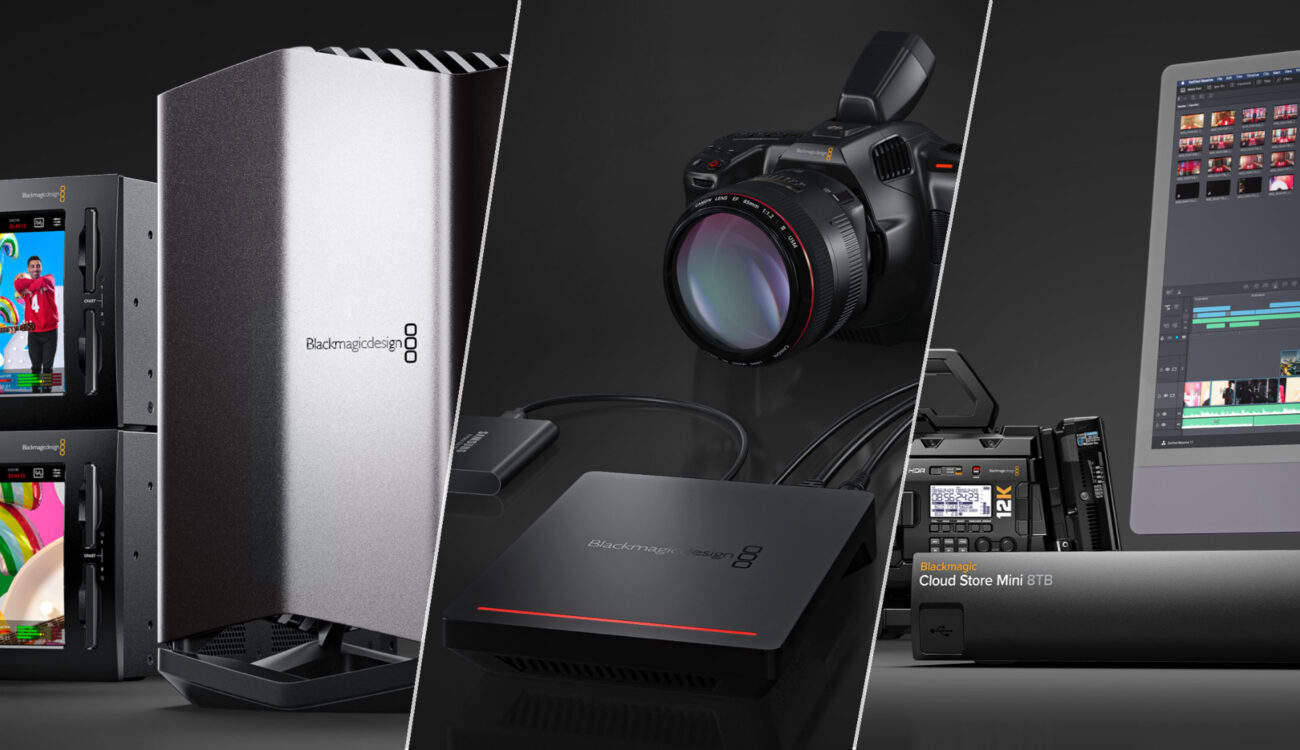
In light of the brand new DaVinci Resolve 18 (article here), Blackmagic Design has also released three storage hardware devices for organizing and distributing large media libraries over the network (including the Internet). Blackmagic Cloud Store comes in three variants: The large Cloud Store (20, 80 or 320TB), the Cloud Store Mini (8TB) or the Cloud Pod (bring your own SSD drive to add storage).
DaVinci Resolve 18 is a massive update first and formost because it enables you to not only store your project library in the new blackmagic Cloud but also collaborate online with your peers and freelancers across the globe.
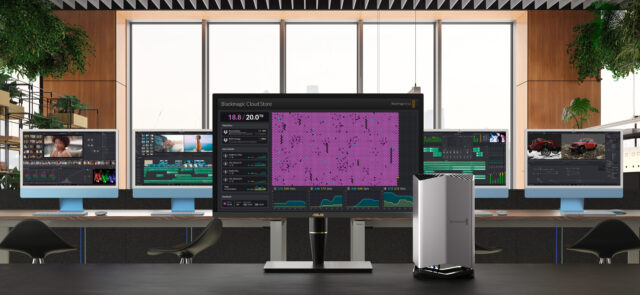
The, also new, Blackmagic Proxy Generator handles proxy workflows and lets you easly switch between original camera footage and smaller proxy files, essential to online workflows across the internet. But how to actually distribute vast amount of data across the net? That’s where the new Cloud Store devices come in handy.
Blackmagic Cloud Store
The big boy is available in three flavors (and in a well-known chassis): 20TB ($9,595), 80TB ($29,995), or a whopping 320TB (built to order, prices not yet announced). There are four 10 Gbit/s Ethernet ports on the back, and that is the real kicker. The storage consists of fast M.2 flash memory cards that can be serviced by the user and are replaceable. The whole thing is configured as RAID 5 for data redundancy.
Filmmaking for Photographers
Connect the Blackmagic Cloud Store to your (fast) Ethernet port, and everyone on the network can access all the media stored in the Cloud Store without any hassle. But that’s not all: since Blackmagic Cloud can connect you to colleagues all over the world, the Cloud Store can also be used as a storage provider for them.
And this is where Blackmagic’s advanced proxy management comes in: all remote collaborators can download the proxy files and get started right away by logging into Blackmagic Cloud and accessing the project in question. In the background, the original camera footage is transferred to the remote freelancer, and as soon as a clip is delivered, DaVinci Resolve 18 switches from the proxy file to said camera original (if desired, you can change the settings to fit your workflow).
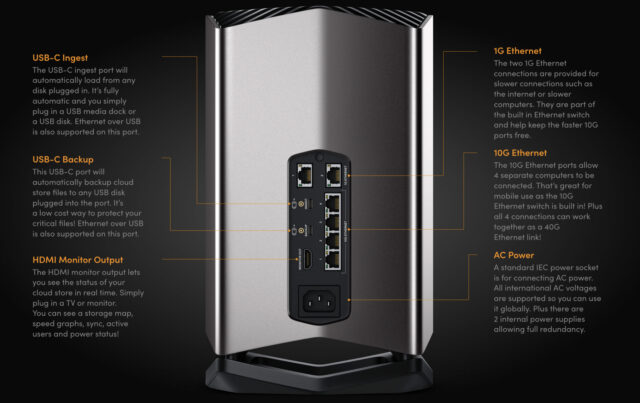
The synchronization can be done via a regular Dropbox account. In the future, Blackmagic Design will also add other synchronization services like Google Drive and others.
Of course, this requires a sufficiently fast Internet connection, but at least it is now possible to easily collaborate with colleagues around the world, while proxy management and file processing take place in the background.
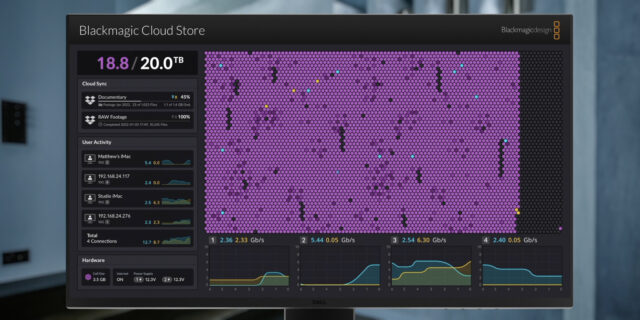
The Cloud Store also has an HDMI output to display a comprehensive dashboard on an external screen. This is very handy as it provides all the information about storage saturation, read/write access, connected clients and network bandwidth.
Since the Blackmagic Cloud Store is pretty much plug-and-play, there are no complicated SAN setups required and, more importantly, no monthly costs, except for the Blackmagic Cloud Project Server that hosts your projects. It costs $5/library per month, and only the host pays for it, not the contributors. If there is no current project online, you pay nothing either.
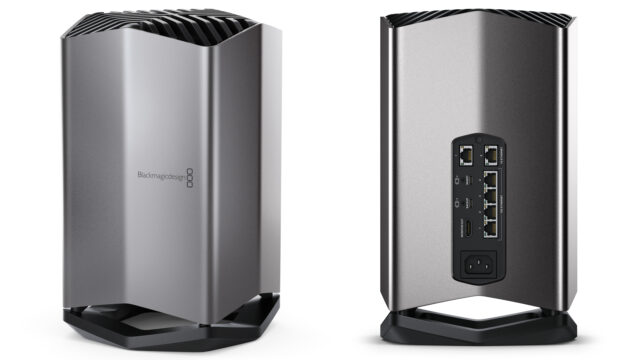
For all the detailed tech specs, please head over to Blackmagic Design.
The Blackmagic Cloud Store is quite expensive and therefore only suitable for larger production houses. The good news, however, is that there are two other models aimed more at indie filmmakers (requiring a bit of collaboration, of course).
Blackmagic Cloud Store Mini
The Cloud Store Mini offers 8TB of fast M.2 NVMe SSD storage, but only two 10Gbps Ethernet ports. It also has a USB-C port, which is actually an Ethernet adapter, so you can connect the Cloud Store Mini directly to your computer via USB. Pretty handy!

The Cloud Store Mini also has an HDMI port for connecting an external monitor that shows you all the statistics and current connections to the Cloud Store Mini at a glance.
The Cloud Store Mini is $2,995. For all the detailed tech specs, please head over to Blackmagic Design.

If that’s still a bit overkill for your projects, maybe the Blackmagic Cloud Pod is worth a closer look.
Blackmagic Cloud Pod
This little guy has no internal storage, but two USB-C ports for connecting its own external SSD, such as the popular Samsung T5/T7. Any attached drive is made available over the network via the 10 GBit/s Ethernet port.

This way you always have a portable hub at hand to which you can connect an SSD (to which you have just recorded from your camera, for example) to make the footage accessible over the network.
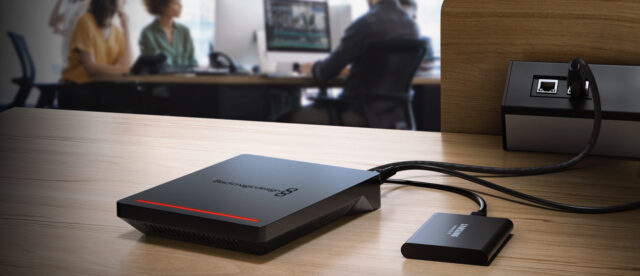
For all the detailed tech specs, please head over to Blackmagic Design. The Cloud Pod is $395.
Conclusion
The brand-new family of Blackmagic Cloud Store devices seems to make it very easy to distribute your footage (plus proxies) over the network and the Internet without gigantic installation costs, subscription fees, and other hassles. To me, this seems like a pretty streamlined solution to a very complex problem: online collaboration on video projects.
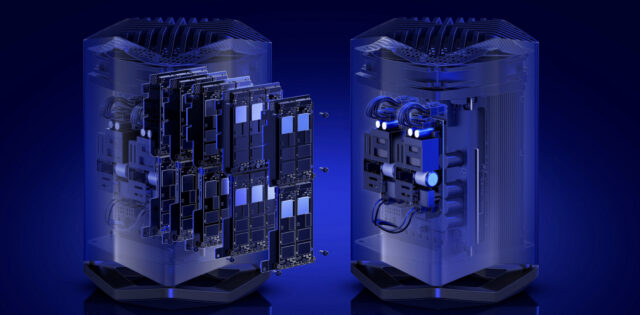
The beauty of this is that you’re not forced to use it until you really need it. DaVinci Resolve 18 works just fine without cloud collaboration, but as soon as you need more, it’s there. and you only pay for what you need: The Cloud Project Server only incurs costs when projects are actually uploaded to it. The Cloud Store devices are a one-time purchase.
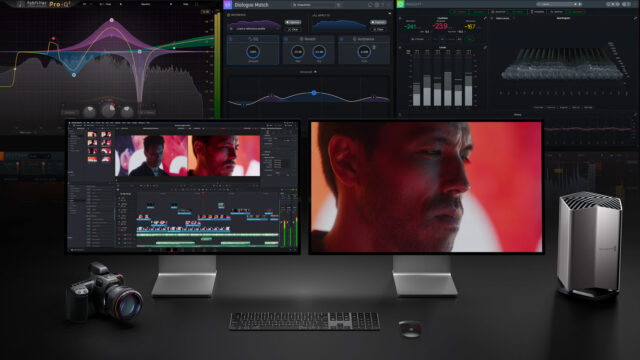
Overall, I really like Blackmagic’s approach of offering a wide range of solutions of different sizes without changing their business model: Use what you need, and as your needs grow, the company has you covered with well-thought-out products.
Link: Blackmagic Design
What do you think of it? Is this what you have been waiting for? Or do you prefer other solutions like Frame.io and the like? Share your experience in the comments below!



